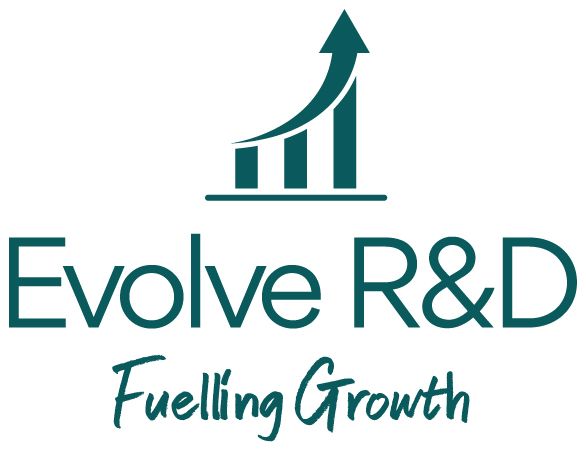R&D Tax Credits - Is your company sat on a hidden fortune?
Research & Development tax expert Phil Andrews from Evolve R&D explains that with an average first claim worth around £50,000, it’s well worth taking a look at the R&D Tax Credit Scheme.
The R&D Tax Credit Scheme is a bit of a mouthful, I agree. But for those of you who’ve never heard of it, turns out it’s a great way of getting hard-earned cash back into your business. And it does this by returning some of the money you’ve already spent on eligible R&D work.
‘Ah … but we don’t do research & development’ I hear you say.
Well, if only I had a penny for every time a client has said that yet still gone on to make a successful claim. So you’d perhaps be surprised about what actually is and isn’t eligible R&D work. For sure, it’s not just about the development of self-landing rockets and life saving vaccines!
So how does it work?
The scheme’s run by HMRC, the UK tax authority, but sponsored by the government. And the government’s keen to promote the scheme because it just so happens that most companies reinvest the money they receive in even more R&D, setting up a positive cycle which benefits all involved – including the government.
And, when you consider that for even a relatively small company, an average first claim is typically around £50,000, it’s easy to see how the scheme has a powerful financial effect.
Why HMRC though? Well, simply because money is returned through the corporation tax system - either in the form of a tax credit (cash payment) or as tax relief (a reduction in tax owed) or a combination of both.
But given that HMRC’s obliged to safeguard taxpayers’ money, there’s understandably lots of rules about what is and isn’t eligible R&D. That said, it’s worth noting that if the rules were too onerous, few companies would bother to make a claim.
This means that whilst there are rules, these are fair and balanced. And it’s the job of an experienced R&D consultant to help a company navigate these rules, making sure they’re properly applied whilst still maximising the value of a claim.
Are you eligible?
To confirm eligibility, ask yourself the following question:
- During the previous couple of financial years has your company spent time and money trying to develop something new or trying to improve something that already exists?
This ‘something’ could be a product, a process, a material or even a service. Plus, it doesn’t have to be particularly high-tech. It could have been something as straightforward as a new hand-tool developed to help improve part of a manufacturing process. Or, it might have involved the development of a bespoke software solution needed to help improve your processes or services.
And, it doesn’t even have to have been developed by you. It’s fine if some third-party did the work on your behalf, so long as they were paid by you for that work.
It’s also important that the development work involved some form of technology or science. So next, ask yourself:
- In doing this development work, did the people involved learn something technically new to them?
- And, was the outcome of this work something which, in your opinion, increased (or advanced) the existing level of technical knowledge or capability within your industry?
If yes, the next issue relates to something called ‘financial eligibility’. And this boils down to a simple but important question:
- In doing this development work, did your company take the financial risk?
This means that when you spent time and money on the development work in question, you had no guarantee that you’d recover the cost of this either through new sales or because a customer paid you for that work.

Real-world examples
- A company which designs and manufactures industrial brake pads was asked by a theme park to improve the braking performance of one of its high-speed roller-coaster rides. The company began an intensive seven-month development process which resulted in much improved brake pads. And this was important not just because it helped improve safety at this theme park but also, because this new type of pad can do the same for lots of other high-performance equipment.
- A company which designs building façade panels was asked to create large fins which would be attached at various points around a tall multi-storey block. The idea being that these fins would create an unusual visual effect. The problem was, however, that the fins were so big and often so exposed to high winds that they acted like an aeroplane wing - in that they created lift and drag and so tried to pull themselves free of the building! The company spent only a week or two designing the fins but several months developing a suitably strong, yet affordable, attachment solution.
Ask the experts
So, the good news is that if you answered yes to the above questions, it’s very likely that your company is eligible for an R&D tax credit claim. The next step is to identify the eligible R&D work you do, properly document this and accurately cost it.
And for this, we recommend you use an R&D tax specialist. After all, understanding and applying HMRC’s more than 180 pages of rules is complicated and takes a lot of technical and financial expertise. Also, following some large and regrettably fraudulent claims, HMRC now more than ever carefully scrutinises every claim it receives to ensure compliance. So our advice is to always engage a reputable and experienced R&D specialist to help maximise the value of your claim and the likelihood of its success.
Phil Andrews is Managing Partner of Evolve R&D and has helped companies in almost every industry sector to make successful R&D claims. More about Evolve R&D can be seen at www.evolve-rd.com



